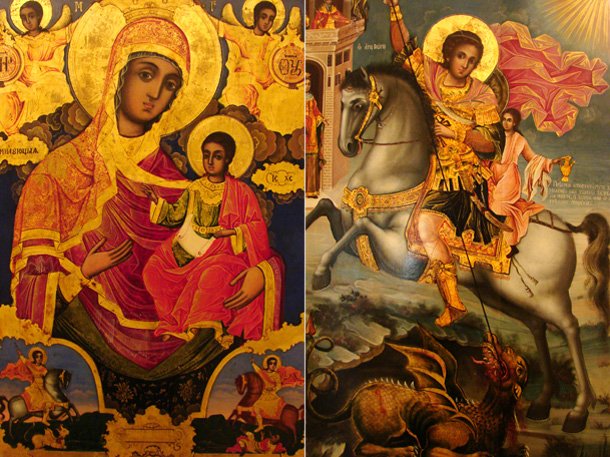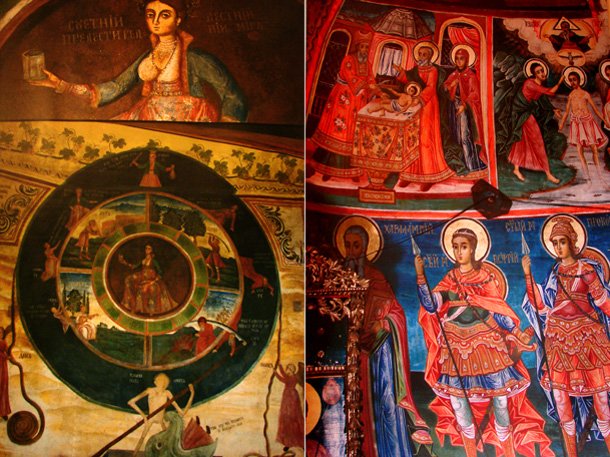

The Holy Mother. St. George and St. Dimitrius on horseback
The impressive display devoted to his 200th birth anniversary includes his most famous self-portrait, the most expensive oil work in the gallery’s entire collection. Visitors are welcome to enjoy Zahari Zograf’s icons commissioned by many churches in Bulgaria, as well as his best frescos.
“His first fresco commission came from the St. Virgin Mary Church in Assenovgard, Southern Bulgaria”, Doroteia Sokolova goes on to say. “He then painted the frescos in St. Nicholas Church at Bachkovo Monastery, and this project made him famous. He worked there until 1840. At Bulgaria’s biggest monastery, Rila Monastery, Zahari Zograf produced a veritable masterpiece. In 1844-1845 the interiors of the monastery’s new large church were painted for the first time. The artist of genius worked on the most difficult part of them, the vaults, displaying unbelievable mastery. He used a fresco technique instead of oil.”

The circle of life. Warrior Saints (both from Preobrajenski Monastery)
Later in his life Zahari Zograf created frescos in the Troyan and Transfiguration monasteries. Toward the end of his life he went to work in Mount Athos. The great artist died at 43. Most of his legacy is kept at the National Art Gallery. It also keeps his family’s collection of prints, the richest in Bulgaria.
Translated by Daniela Konstantinova
Photos provided by Veneta Pavlova
“A story that is worthy of a movie” is what we often say when we hear about some incredible event or an interesting story. It is cinema that seems to help today's digitally dependent person, for whom the magical worlds of paper books..
After the success of the "We are the children of the river" festival in September, a civic foundation is once again collaborating with the Plovdiv City Centre Municipality. This time they have organised an exhibition of the same name, featuring..
The Gala Concert of the National Ballet of El Salvador will take place today at 16.00 in the State Opera House in Stara Zagora as part of the programme of the 54th International Festival of Opera and Ballet Arts . The founder and director of..

+359 2 9336 661
